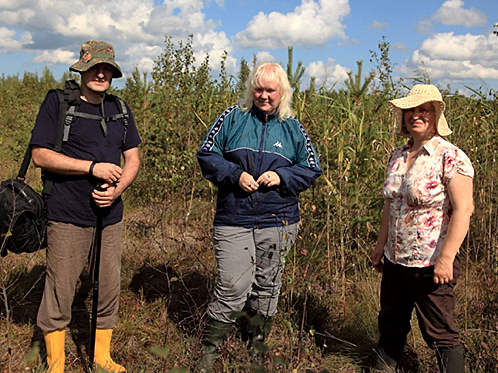Kollamaa Holiday House nature trips

Price:
Address: Suurküla 21, Häädemeeste, Häädemeeste municipality, 86001 Pärnu county, Estonia
Phone: +372 5656 1373
Email: info@kollamaa.ee
There are several nature reserves close to Häädemeeste, but also in 100 km distance. Wooden trails, information boards and good parking facilities make visiting them comfortable.
Kollamaa Holiday House can guide tours on local trails and compose guided tours with different duration and themes in the region and all over Estonia.
The owner, Marika Kose, is a nature guide and lecturer in Nature Tourism in Estonian University of Life Sciences and working as a consultant on rural tourism development and nature tourism. This expertise can be well used in tours according to your personal needs and requests.
Marika is specialised in tours in local wetlands, such as Tolkuse bog and Nigula bog (on trail and also off-trail), Häädemeeste coastal meadow, Kabli and Laiksaare nature trails and other natural sites in Häädemeeste. If you wish, she can organise tailored tours in Estonian nature lasting several days.
Example: Tolkuse bog tour 2 hours
Meeting in Rannametsa Tolkuse trail starting point (parking lot).
* Marika talks about the creation of the coastal dune landscape by coastal processes after the last glaciation. She discusses the forests on coastal dunes, their dynamics, succession and wildlife. On request, she can also provide deeper explanations about different habitats, species and nature conservation. On the highest dune, there is a lookout tower.
* Three islands – Kihnu, Sorgu and Manilaid – can be seen in clear weather. The magnificent look over the treetops is one of the most diverse from such towers in Estonia – sea, coastal meadows, fields, dunes and forests, raised bogs and pool patterns. The perimeter is about 15 kilometers in some directions.
* On sandy dunes the rare sand lizards warm themselves, displaying their emerald green necks and heads in spring during mating time. Descending from the stairs towards the bog, on the left a more than 150 years old pine is towering from the bottom of the dune.
Tolkuse bog offers many opportunities to interpret: the history of peat mining in the 1950s, the restoration activities during last decades, the pools, peat and plants, including carnivorous sundews and edible cranberries and cloudberries. The trail leads to the pools, bordered by the floating bog surface with cottongrass tussocks and some hummocks and dwarf pines on top of them. The bog pools are the most beautiful and magnificent part of the tour, offering a view over calm dark waters. The waterlilies and bogbeans offer contrast, when in flower, clouds reflect from the surface and tranquility will envelop everybody.
The last part of the trail passes the bog restoration site, where on one side the secondary pine forest is left to grow and on the other side the open heather fields with some birches mark the restoration site, recovering from peat cutting, drainage and secondary forest growth.
